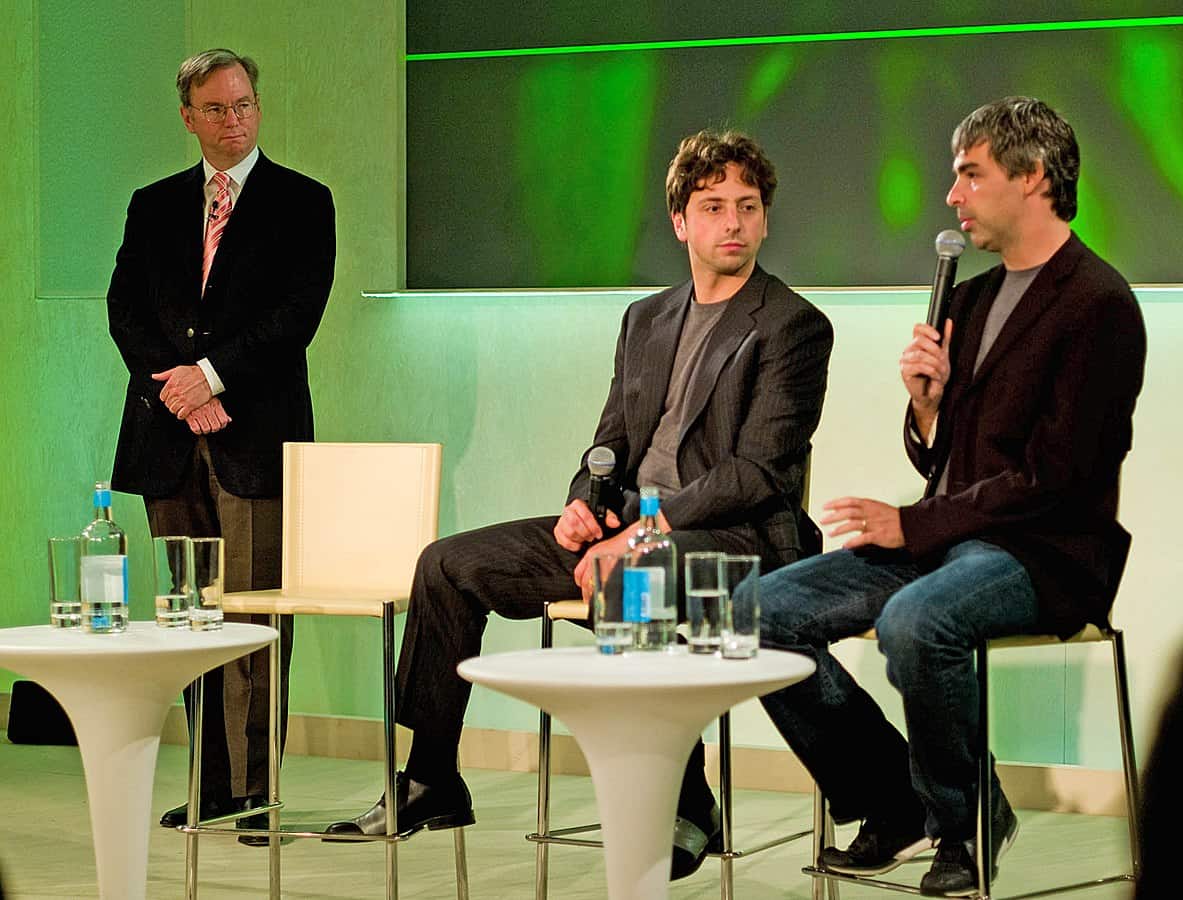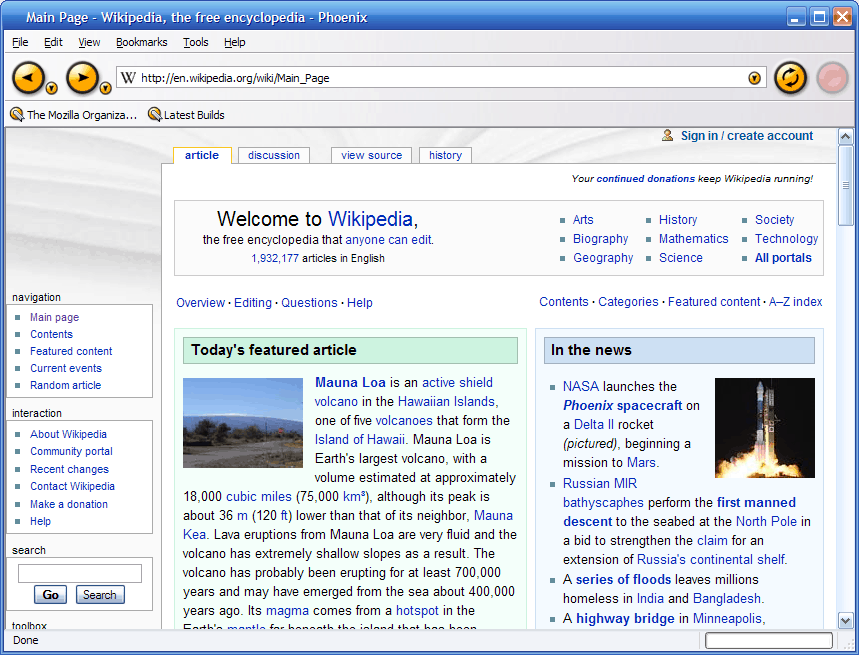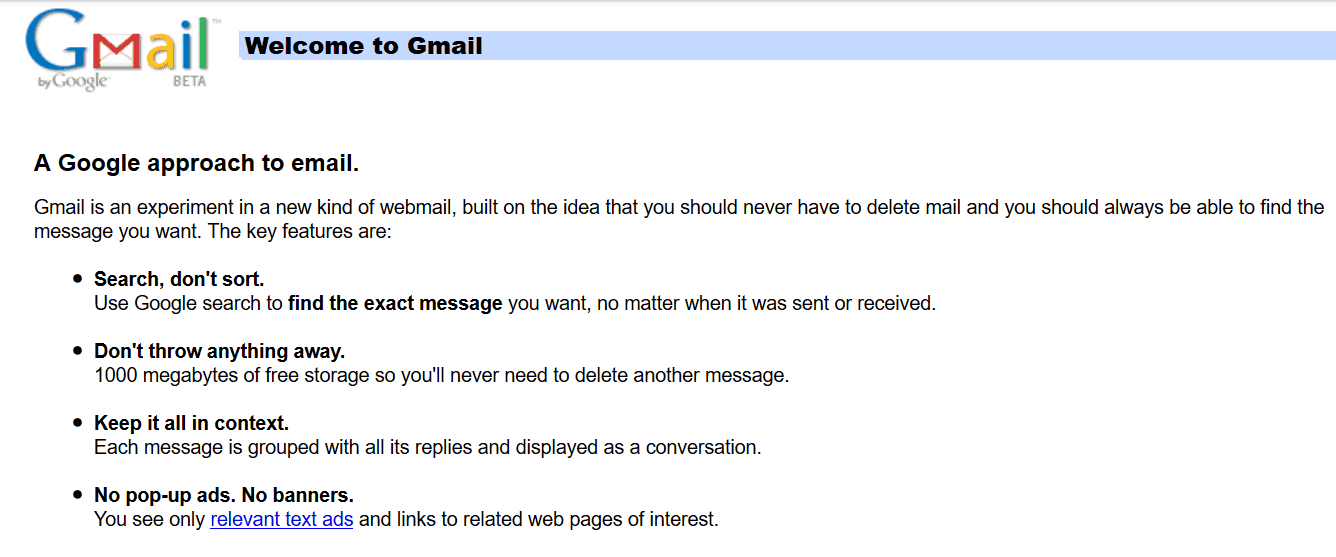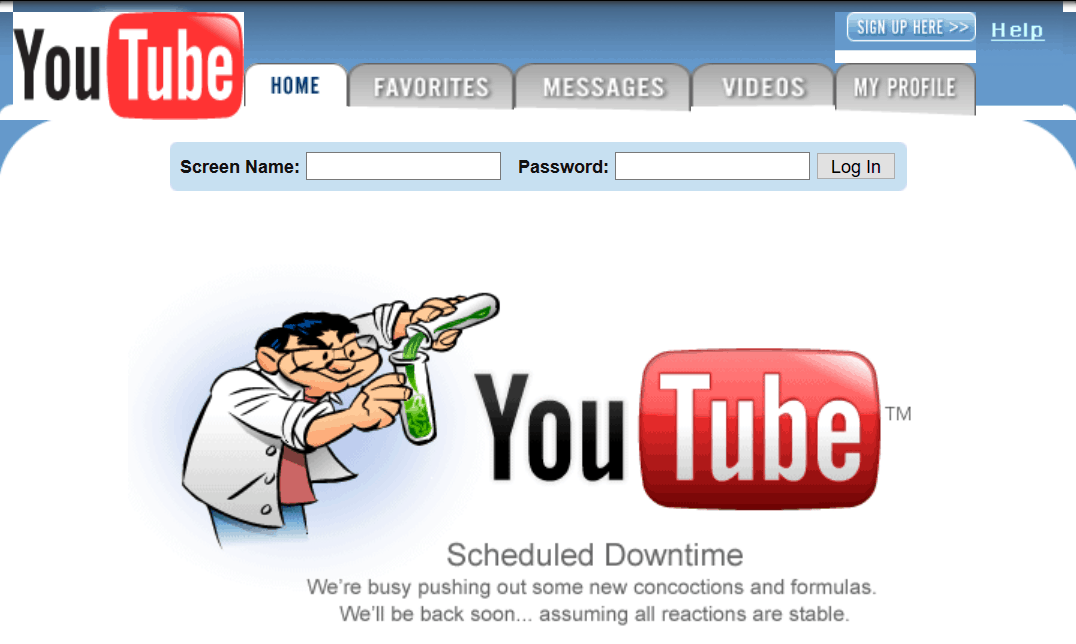In Part 8: The Google Story, we covered the years 1996 to 2003. Google founders Larry Page and Sergey Brin hired Eric Schmidt as chairman, and then CEO, of Google in 2001 — and the three executives learned how to work smoothly together.

Google focused on providing users with high-quality search results quickly, and this was instrumental in their early success. By 2003 they had overtaken Yahoo! as the world’s most popular search engine, and Google AdWords helped to keep the money coming in.
That year also saw the launch of AdSense, which allowed third-party publishers to access their network of advertisers and place contextually relevant adverts on their own websites. Instead of ads being linked to the search results, they were related to the content of the website.
Google was still vulnerable to competitors however, because the only mechanism for ensuring customers kept coming back to its search engine was that its technology was superior. If a better search engine came along, there was nothing to deter customers from abandoning them.
To protect future profits, Google worked on a strategy for locking in customers to the Google Suite of products and features. For this plan to work, they would need an offering that stood out from all others. Their philosophy was “focus on the user and everything else will follow.”
Google had a wide range of experimental products, with employees working on them for up to 20 percent of their weekly hours. In 2004, there were around 500 different projects in development across the company.
Most of them never lived to see the light of day.
However, a few of them showed so much promise they evolved to fundamentally transform the company. These new products were built to take advantage of the biggest technological breakthrough in web development history: AJAX.
How AJAX Was Invented
Asynchronous JavaScript and XML (AJAX) allows developers to write more responsive web applications, with a user experience that is similar in style to desktop software. If you have never heard of AJAX before, John Sonmez has an explanation of this and other Web technologies in his post What is Web Development?.
What is now known as AJAX was invented by Microsoft in 199; at the time, nobody knew how big it was going to be, or what it would lead to.
In Part Two: World Wide Web Early Years, we learned that Tim Berners Lee invented Hypertext Markup Language (HTML) in 1990, and then founded the World Wide Web Consortium (W3C). The W3C agreed to standardize HTML at its first meeting, and
through the 1990s, the consortium issued recommendations for newer versions of HTML.
However, HTML was limited in that it only defined a small set of entities that could be used. In 1996, work began on a new language called Extensible Markup Language (XML).
One of the designers was Jean Paoli from Microsoft. Together with Tim Bray from Netscape and C. M. Sperberg-McQueen from the University of Illinois at Chicago, they produced a W3C Recommendation for the first edition of XML 1.0 in 1998, and another for the second edition in 2000.
Microsoft believed the XML technology was worth investing in, and while Paoli and his colleagues were developing the W3C Recommendations, other engineers at Microsoft developed a set of services for it known as MSXML.
In 1999 MSXML shipped with Outlook Web Access (OWA) and Internet Explorer 5 was the first browser to provide a means of doing XML HTTP Requests (using IXMLHTTPRequest via an XMLHTTP wrapper of the MSXML library).
If the IXMLHTTPRequest object doesn’t mean much to you, you certainly are not alone here. Very few people understood what it was about or why they should want to use it. The technology required Microsoft’s proprietary ActiveX technology.

In Part Five: The First Browser War we covered the story of how Microsoft’s Internet Explorer defeated Netscape Navigator. Some of the former Netscape employees formed part of a new company called Mozilla. In 2002 they released a preview of a new browser, Phoenix. This was powered by a new JavaScript engine called Gecko, which supported the XmlHttpRequest (XHR) object.

In the early 2000s, due to lack of standardization, a developer might use JavaScript code a bit like this to attempt AJAX programming:
function createXHR()
{
try {
//Supported by Phoenix (2002) or Safari (2004) or Opera (2005)
return new XMLHttpRequest();
}
catch(e) {} //continue the program if this doesn’t exist
try {
//Supported by Internet Explorer
return new ActiveXObject{“Msxml2.XMLHTTP”};
}
catch(e) {}
alert(“Sorry, XHR is not supported by your browser”);
}
While the XHR technology was invented by Microsoft, it was Google’s engineers that best demonstrated its amazing potential to the world. They created several applications that forever changed people’s opinions on what was possible to develop on the internet.
Let’s take a look at some of Google’s most transformative AJAX apps:
Google Mail
The first experimental 20 percent time project to become a massive hit was initiated by Paul Buchheit in 2001, and they called it Caribou.
Today this is known as Google Mail.
After developing the first generation of Google Groups, Paul was invited to work on an email product. Since search was what Google did best, the first version of Caribou only performed email searches, and was created in just one day using the Groups code.

On April 1, 2004, Gmail was launched with a press release that looked exactly like an April Fools Day prank. It asserted that search was only the number-two activity online, whereas email was number one, so they created the entire product due to a single user complaint. The release also announced Gmail’s one gigabyte (GB) of storage space, which at the time was 500 times more storage than any other free email service.
Few people took them seriously on that day.
Once people realized the announcement was actually true, adoption rates were high. Although it advertised as just a preview, it benefited from word of mouth, with friends recommending it to other friends. New users felt part of a privileged group of web users who were in the know about the hottest new internet development.
Earlier email services lacked a good search utility, so users could waste a frustrating amount of time looking for emails written a long time ago. Google search made finding those old emails a breeze. And with one gigabyte of storage space, users no longer needed to play Sophie’s Choice with which emails they needed to delete.
Larry Page initially decided that Gmail should not even give users the option to delete any emails, arguing “If you delete stuff, you might later on decide you want it. Plus, you spend time thinking about whether I should delete this or not.” The Electronic Privacy Information Center (EPIC) viewed Gmail as “an unprecedented invasion into the sanctity of private communications” and as the privacy backlash continued, Google conceded by adding a delete button.
Google’s aim was always to eliminate the need to delete emails however, and they realized the most common reason for deleting was to avoid running out of storage space.
On April 1, 2005, the first anniversary of Gmail, the storage limit increased to two gigabytes of storage, with Google promising to “keep giving people more space forever.”
The full story of gmail is explained in the book Founders at Work: Stories of Startups Early Days.
Google Suggest
In the summer of 2004, Google engineer Kevin Gibbs also began a 20 percent time project. Google Suggest enhanced their search engine by providing autocomplete suggestions whenever the user was typing in the search terms.
For example, if you type “we” into the Google search box, it will probably suggest “weather” to you. Today, this facility is so ubiquitous that it is hard to imagine anyone searching online without it.
Google Maps
In October 2004, Google acquired Where 2 Technologies, which had developed a desktop mapping application using C++. Google began the task of converting it into a web application.
Rendering a detailed map on a screen thousands of miles across the world within a second or two is a hard problem made solvable by XHR. Google engineers split the map into a set of tiles and used XHR to update each map one piece at a time. Users saw the map coming quickly into focus instead of needing to wait a long time for the complete map to be drawn in one go.
Google Maps launched in February 2005.
Both Google Suggest and Google Maps inspired Jesse James Garrett to coin the term AJAX for this technology. He was excited to see the gap between the web and desktop user experiences was closing fast, with changes happening almost instantly.
These breakthrough technologies were on Jesse’s mind so much, he thought of the acronym AJAX while he was in the shower! AJAX is shorthand for “Asynchronous JavaScript and XML”.
Garrett’s post Ajax: A New Approach to Web Development enthused developers around the world and the AJAX practice began going mainstream.
Jesse James Garrett
You Tube
YouTube in 2005, before it was bought out by Google
One of the keys to Google’s extraordinary growth is its ability to foresee and plan for the next big thing rather than resting on its laurels.
In an interview with John Battelle in 2005, Schmidt was pressed to reveal Google’s future business strategy. “We understand that video is the next holy grail,” Schmidt announced, but he avoided going into further details. With billions of dollars in profit, Google was regularly buying up smaller companies, and one of the hot startups that it closely followed was YouTube.
YouTube was created by three former PayPal employees—Chad Hurley, Steve Chen, and Jawed Karim—in February 2005. Chen also was briefly one of the first Facebook employees before being convinced that YouTube was a better idea for him.
Launched at the time when broadband adoption rates around the world were rapidly increasing, YouTube was a huge hit. By November 2006 more than 100 million YouTube videos were being watched every day, more than half of all videos of the internet.
Google announced on Oct. 9, 2006, that it had agreed to buy YouTube for U.S. $1.65 billion. BBC News analyst Robert Peston remarked the price was “an astonishing sum of money when you consider that YouTube was only created in February of last year.” He explained that the value was “for the advertising potential which [Google] thinks is enormous.”
The YouTube founders were ecstatic with the takeover of their new company, which had yet to make any profit. Chad Hurley said “we’re going to be able to provide you with an even better service and build even more innovative features for you.”
The YouTube acquisition was another example of a product that associated Google with fluid and entertaining user experiences. In the early 21st Century, Google succeeded in building on a technology that originated from Microsoft, and following the mantra “focus on the user and all else will follow”.
What followed was products that became world famous for their quality and ease of use.
While the takeover of YouTube generated headlines all around the world, another majorly important acquisition went almost completely unnoticed: the 2005 acquisition of Android Inc.
Join us in Part 15 for the story of Android.



